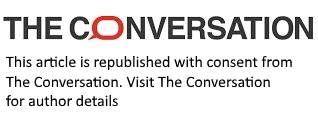research reveals what makes some images more engaging than others
- Written by T.J. Thomson, Senior Lecturer in Visual Communication & Digital Media, RMIT University

We see hundreds or thousands of images each day – but not all of them stand out to us. Why are some visuals more engaging than others? In an attention economy, where creators and organisations battle for our eyeballs, knowing the answer has never been more important.
To address this question, we asked about 100 people across three different communities in Australia to rank photos from least to most engaging. We analysed the rankings, and interviewed respondents to understand the “why” behind their choices.
Our new research reveals three interrelated criteria that affect why audiences engage with some images more than others. These are: the content of an image, how the images is presented, and who is seeing and reacting to it.
What content makes for an engaging image?
Who or what is shown, and how, markedly affects how someone engages with an image.
We found viewers generally considered images with other people in them – and particularly images with faces – as more engaging than those without.
The number of people or objects in the frame also mattered. Fewer objects resulted in simpler compositions that were easier to parse and, as a result, more eye-catching.
Along the same lines, images were generally more engaging when they had a focal point (which would ideally be offset from the centre of the frame), compared to those with a lack of a focal point and arbitrary framing.
However, centring the focal point worked well in symmetrical compositions, or when the frame was square.
Participants ranked posed photos as less engaging than seemingly candid shots – appreciating the authenticity of the latter. They also ranked text-heavy images, such as those with people standing by or holding signs, as less engaging than action shots.
In terms of emotional tone, images that showed negativity, conflict, or drama were ranked as more engaging than those that showed positivity. In the words of one interviewee:
People always have a weird interest in yucky things. You’re like, ‘Oh, is someone dead?’ or you’re interested in the ‘Why?’ It’s intriguing.
Participants preferred images that showed something they didn’t see every day, such as a rare double rainbow, or a visit from a prominent figure to a community.
Novel camera angles also generated interest. This is partly why drone shots are so popular. They provide a new perspective and tend to be less “cluttered” than vision captured from the ground.
In terms of visual depth, images with a clear foreground, mid-ground, and background were found to be more visually interesting than those with just a mid-ground and background.
Presentation factors
If you’re always tempted to apply black and white or muted filters to your images, think again.
Our participants regarded images with bright and bold colours as more engaging than drab ones. This was even true for photos with conventionally boring subject matter. Colour, we found, can make or break an image.
Size mattered, too. Viewers generally regarded larger images as more engaging than their smaller counterparts. Larger images were more eye-catching and could accommodate “busier” compositions, compared to smaller images that might be viewed on smaller smartphone screens.
Viewers also relied on captions or accompanying descriptions to determine whether an image was relevant, local, or produced by trustworthy or notable figures – all three of which played a role in how “engaging” they found a particular image.
What you bring to the viewing
Your personal attributes and experiences shape how you interact with visual media.
For instance, seeing a photo of the Sydney Opera House when you’ve never been there is different to seeing a photo after you’ve seen it in person. In the latter case, you bring your own memories and experiences to the viewing, and these can positively or negatively affect your engagement.
We found engagement with an image was likely to be higher if the image depicted faces or places that were “local” to the viewer. For most viewers, obviously posed stock images were forgettable.
To a degree, engagement behaviours were also shaped by what was interesting to a viewer’s friends, families, and other people they deemed important. As one 70-year-old participant explained:
My grandchildren play sport, so I’m always interested in [seeing photos of] that.
Winning and losing themes
On average, some topics were considered more engaging than others. For example, images related to health and crisis situations were more widely relevant and engaging than sports or education.
That said, not all widely relevant topics were necessarily engaging. For example, our participants ranked photos of politicians as unengaging. Although they acknowledged politics is important, many said these photos were boring or off-putting.
How to stand out with your images
The above insights into engagement behaviours can be used by anyone looking to spruce up their photos.
When you’re making, editing, or publishing an image, carefully consider its content, the presentation circumstances and your audience.
One key piece of advice is to focus on the action rather than the outcome. For instance, rather than showing an award-winner with their trophy, show what they did to earn that trophy. Also remember to keep your audience’s attributes in mind, and try to cater for them.
Doing so will give your images the best chance to stand out among the billions of others circulating online each day.
Authors: T.J. Thomson, Senior Lecturer in Visual Communication & Digital Media, RMIT University





